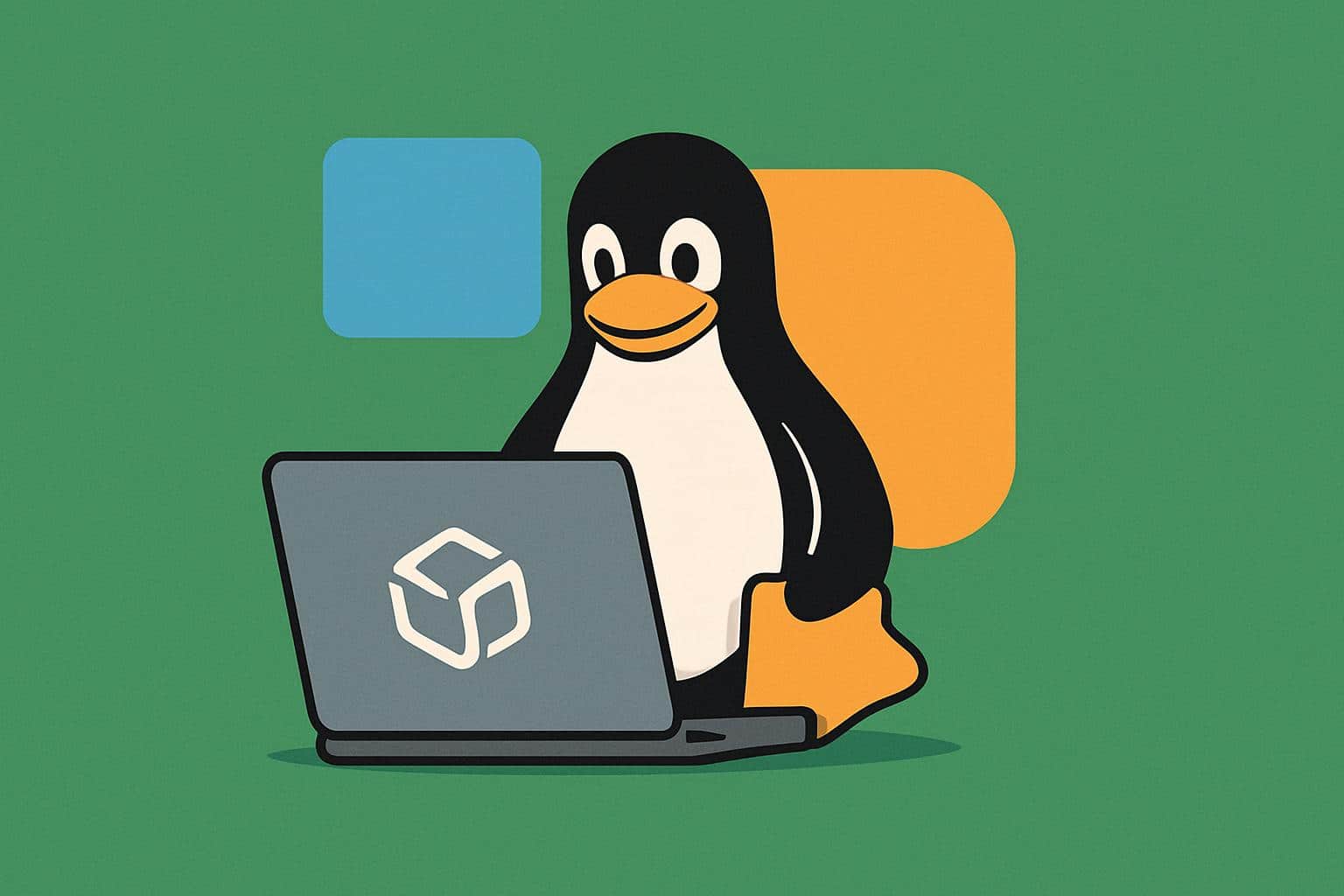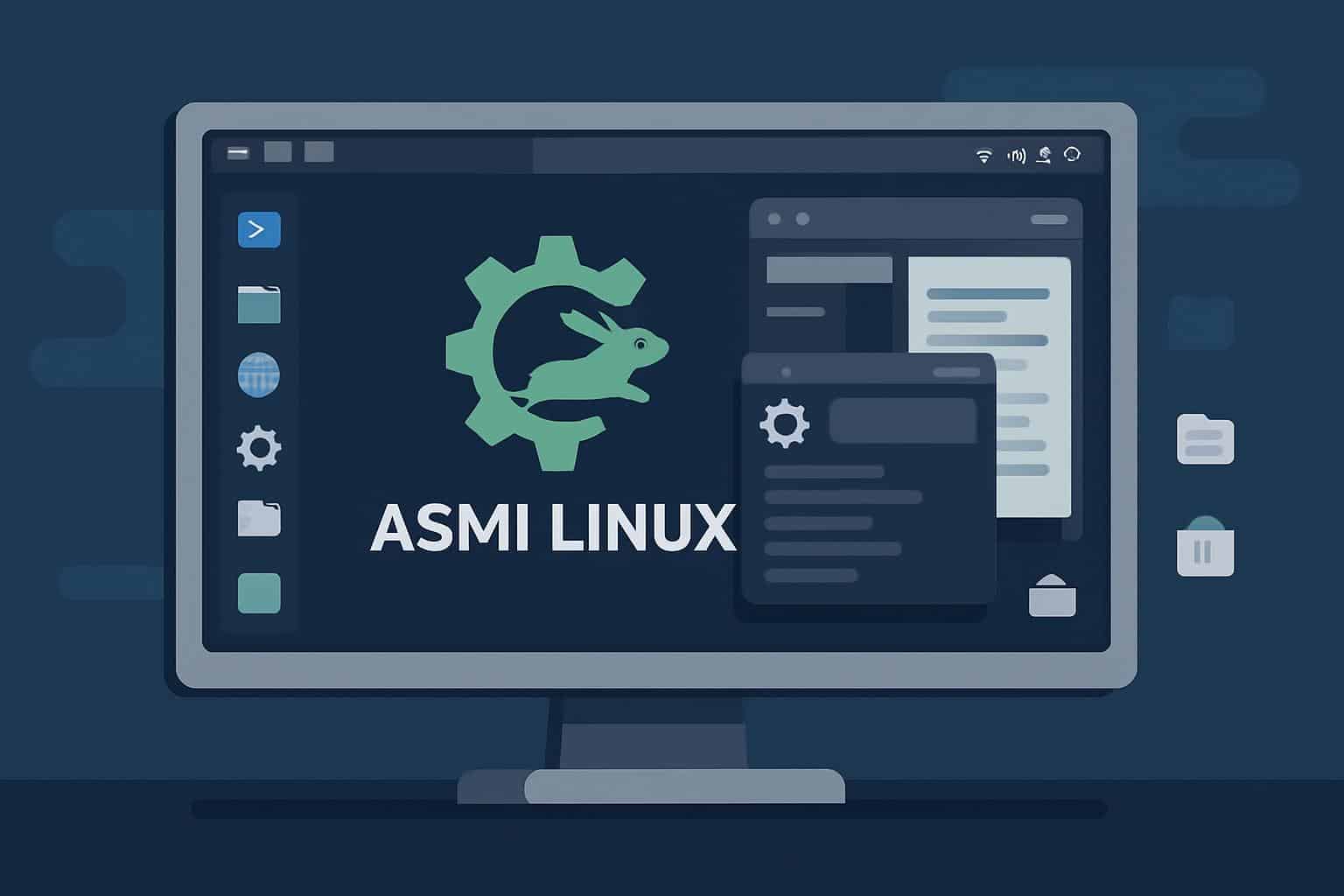Asmi Linux leans into Xfce’s strengths, giving you a responsive, low-friction desktop experience that’s fast from the first boot. It doesn’t get in your way, it doesn’t slow you down with resource bloat, and it leaves room for you to make the system yours, even though it requires just a few minutes to get the tools you want installed.
New release adds Xfce polish on Ubuntu and Debian bases
The latest Asmi release comes in two flavors on known bases: one follows Ubuntu 25.10, the other is derived from Debian 13. On top, Asmi layers pragmatic bespoke Xfce tweaks like save-and-restore desktop layouts, a refreshed look that includes client-side decorations to clean up title bars on windows, and a saner default toolbar layout.
- New release adds Xfce polish on Ubuntu and Debian bases
- Performance stays snappy with modest memory usage
- A lean setup keeps Asmi fast, but you will add apps
- Debian and Ubuntu editions balance stability and support
- Ultimate Edition offers a turnkey app bundle and updates
- Thoughtful Xfce refinements improve everyday usability
- Who should use Asmi Linux, and who should look elsewhere

This is but one lead example of the balance Asmi shoots for: Xfce can be made to look and behave better without the performance-hampering bloat found in some other desktops.
Performance stays snappy with modest memory usage
The overall theme is performance, as well. Asmi behaved as promised in tests on a 4 vCPU, 8 GB RAM virtual machine with an image backed by SSD. In a clean session, Asmi sat around the mid-500 MB range idle and opened a desktop after GRUB launched in about 15 seconds.
Our numbers matched independent tests I saw in multiple articles putting Xfce well behind the heaviest desktops in measured memory footprint and longer-term benchmarks from tech publications such as Phoronix. Asmi Linux is for people interested in working with older machines or preserving the value of a super-responsive system.
A lean setup keeps Asmi fast, but you will add apps
Asmi also deliberately keeps the free edition lean. You get the essentials, but not a full office suite, media tools, or an email client. While that choice keeps the downloads quick and the bloat low, it’s likely that you’ll spend a few minutes making sure you have your toolkit. But that’s no big deal: grab a graphical software manager and then go pull what you need from your favorite sources.
The project sells Appy for 19.99 USD – an all-in-one store for APT, Snap, Flatpak, and AppImage – but you don’t have to use it. It’s convenient – all in one pane for search, install, and updates – especially for newcomers, but not mandatory. Adding GNOME Software or Synaptic is free, and enabling Flatpak or Snap takes minutes. It’s not as consolidated, but it’s exactly where you’d expect it to be if you’re already familiar with Ubuntu and Debian derivatives.

Debian and Ubuntu editions balance stability and support
Both builds feel stable, but they lean on slightly different instincts. The Debian-based edition mirrors the project’s conservatism and is backed by the Debian Security Team’s long stability record – if you want fewer surprises and a far more glacial cadence, this is a solid bet. The Ubuntu-based edition has Canonical’s help with hardware enablement, kinder defaults, and a huge ecosystem of third-party docs, and yes – they adjust the base lightly, too.
Ultimate Edition offers a turnkey app bundle and updates
There’s also an Ultimate Edition for $9.99 that preloads crowd-pleasers and includes access to refreshed ISOs released every two to three months.
- LibreOffice
- VLC
- OBS
- GIMP
- Inkscape
- Flameshot
- Shutter
- Xournal++
If you value a turnkey setup or you’re provisioning multiple machines, that small fee may save time. Power users comfortable with a package manager will replicate the same loadout in roughly 10–15 minutes on a decent connection, so the decision comes down to convenience versus control.
Thoughtful Xfce refinements improve everyday usability
What impressed me most is how Asmi balances minimalism with livability. The default panel, menu, and theming are tastefully arranged, and the ability to export and load custom layouts encourages experimentation. Xfce’s hallmark flexibility remains—panel plugins, window buttons, and workflows can all be reshaped—yet the distribution avoids the visual noise that sometimes creeps into rolling customizations.
Thanks to the move to client-side decorations, applications that support CSD present slimmer, tidier title bars and clearer hit targets, which helps on smaller displays. It’s a subtle tweak, but it contributes to a cohesive feel, especially when mixing classic X11 apps with more modern toolkits. For users who care about getting the details right, these refinements matter.
Who should use Asmi Linux, and who should look elsewhere
If you like a fast desktop and don’t mind five minutes of setup to get your preferred apps up and running, I can easily recommend Asmi. Xfce die-hards will like the speed and sane defaults; adventurous new users will be afforded a stable parking lot to explore without the baggage of heavier desktop environments. If you need everything thrown at you the second you sit at the desktop, the paid bundle will be the way to go—or maybe just a different distribution. For the rest of us, Asmi nicely hits the mark: quick to the party, fun to meddle with, and dependable once you have personalized it.

